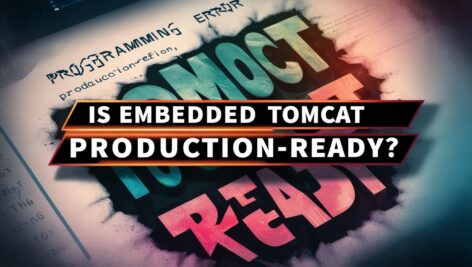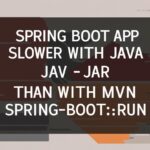Deploying Java web applications to production often involves choosing between embedded Tomcat (JAR) and standalone Tomcat (WAR). This guide explores their differences, advantages, and ideal use cases to help you make an informed decision.
Embedded Tomcat in Production: Stability & Use Cases
Embedded Tomcat, as used in Spring Boot, is production-ready and widely adopted in cloud-native environments. Here’s why:
- Same Core Tomcat: It shares the same codebase as standalone Tomcat, ensuring reliability and performance.
- Simplified Deployment: No need to manage external Tomcat instances; the JAR is self-contained.
- Cloud-Native Friendly: Ideal for Docker, Kubernetes, and PaaS (e.g., AWS, Heroku), allowing easy scalability via replicas.
Drawbacks:
- Limited access to Tomcat’s advanced configurations (e.g., global JNDI resources, session clustering).
- Requires a full rebuild and redeployment for server-level changes.
✅ Use Embedded Tomcat If:
- You’re deploying to the cloud or using containers.
- Your application doesn’t require complex Tomcat tuning.
- You prefer a simple, portable deployment model.
Traditional WAR Deployment: When to Use Standalone Tomcat
Deploying a WAR to a managed Tomcat server is beneficial when:
- High Availability & Clustering: Running multiple Tomcat nodes is necessary.
- Centralized Management: Shared configurations (SSL, logging, etc.) must be maintained across applications.
- Legacy Infrastructure: The production environment already relies on standalone Tomcat setups.
⚠️ Note: Spring Boot supports WAR packaging too! Add <packaging>war</packaging> in pom.xml and exclude embedded Tomcat:
<dependency>
<groupId>org.springframework.boot</groupId>
<artifactId>spring-boot-starter-tomcat</artifactId>
<scope>provided</scope>
</dependency>
Testing with Tomcat 8/9: Alternatives to Maven Plugin
Since tomcat7-maven-plugin is outdated, consider these options:
- Testcontainers: Run Tomcat 8/9 in Docker for integration tests.
- Programmatic Embedded Tomcat:
- Spring Boot’s
TomcatServletWebServerFactorysimplifies the setup. - Without Spring Boot, manual dependency configuration is required (less convenient).
- Spring Boot’s
Key Recommendations
- For Cloud/Containerized Deployments:
- Use embedded Tomcat (JAR) for simplicity and scalability.
- Example: Deploy as a Docker container using
java -jar.
- For Managed Tomcat Infrastructure:
- Package the application as a WAR and deploy to a standalone Tomcat instance.
- For Testing:
- Use Testcontainers for Tomcat 8/9 compatibility.
- Rely on Spring Boot’s automation rather than configuring embedded Tomcat manually.
Keywords
- Embedded Tomcat vs. Standalone
- Spring Boot WAR vs. JAR
- Tomcat Production Deployment
- Tomcat Maven Plugin Alternatives
- Cloud-Native Java Deployment
Final Thoughts
Embedded Tomcat is an excellent choice for modern cloud-based deployments, while standalone Tomcat remains a strong option for traditional, centrally managed environments. Selecting the right deployment strategy ensures optimal scalability, stability, and maintenance efficiency.


